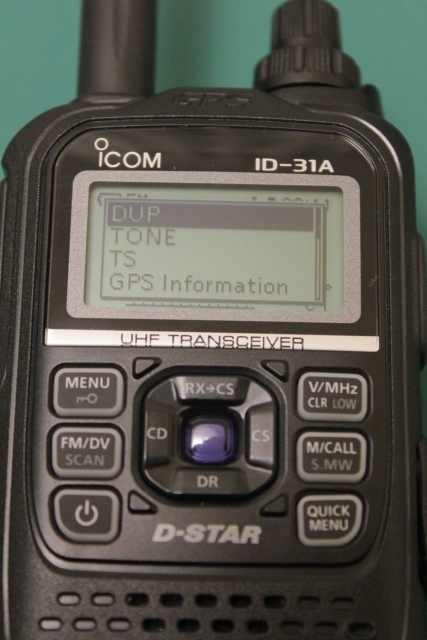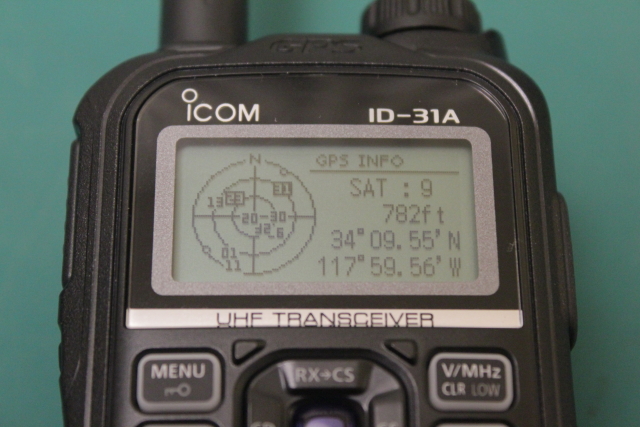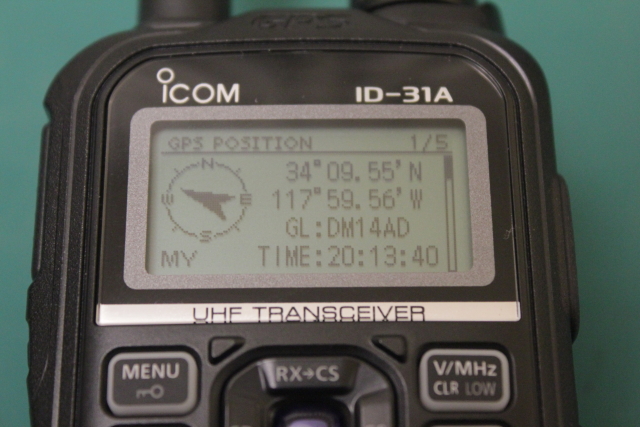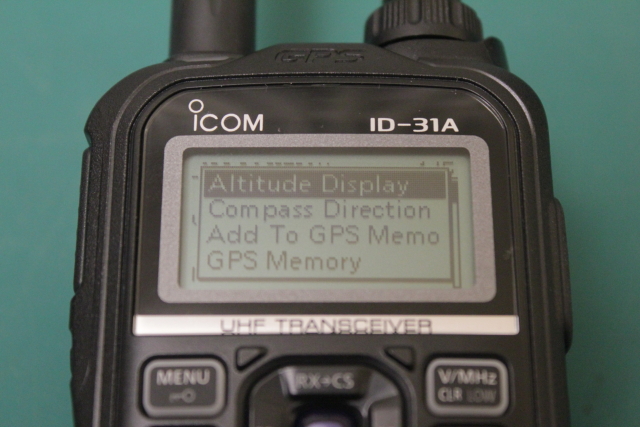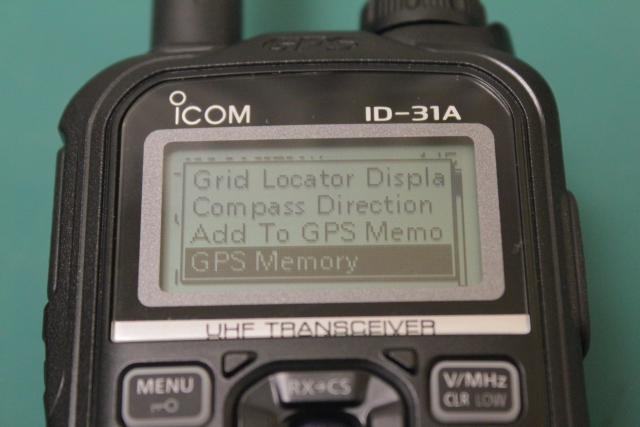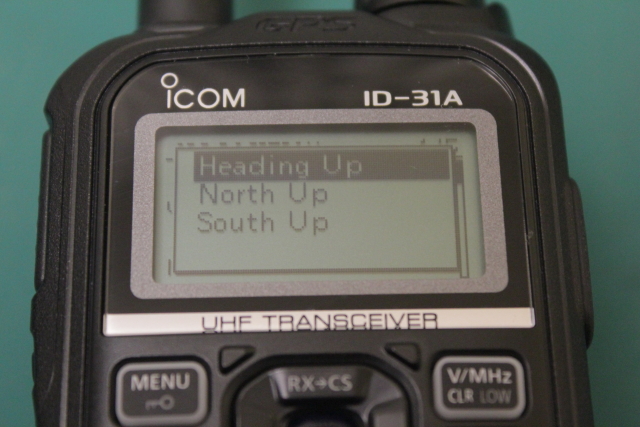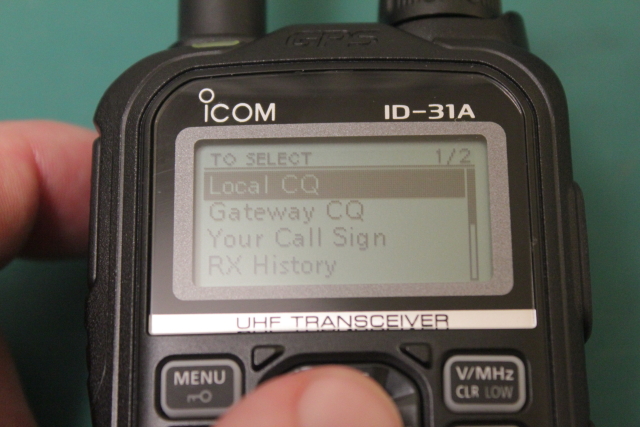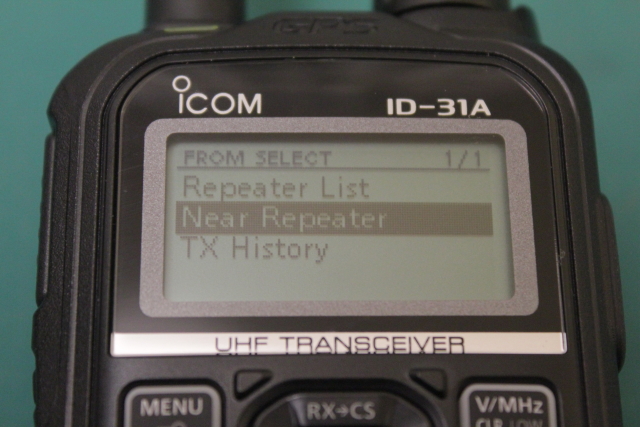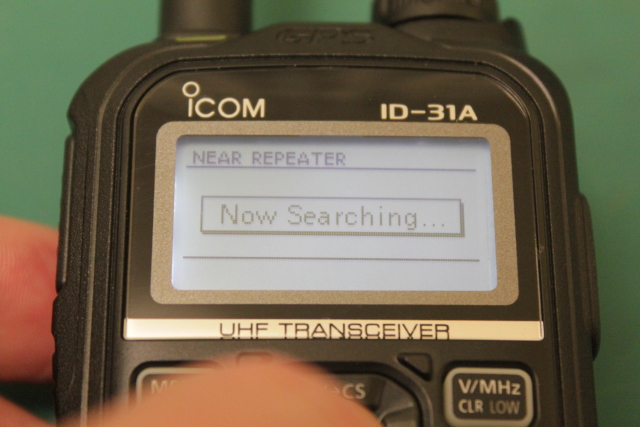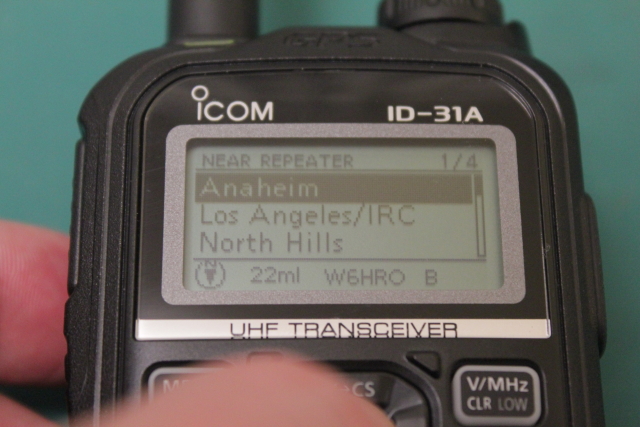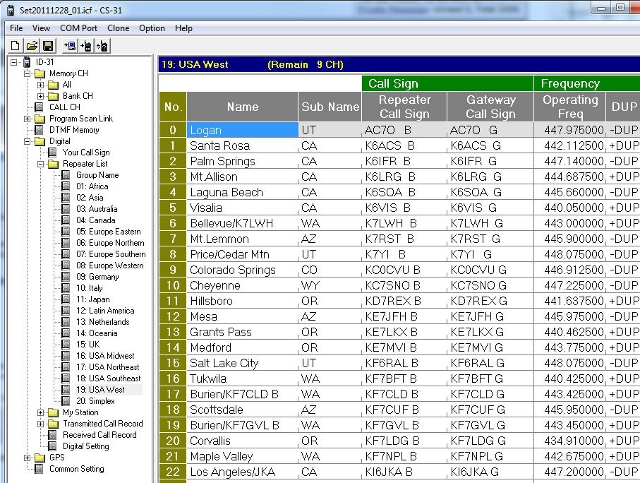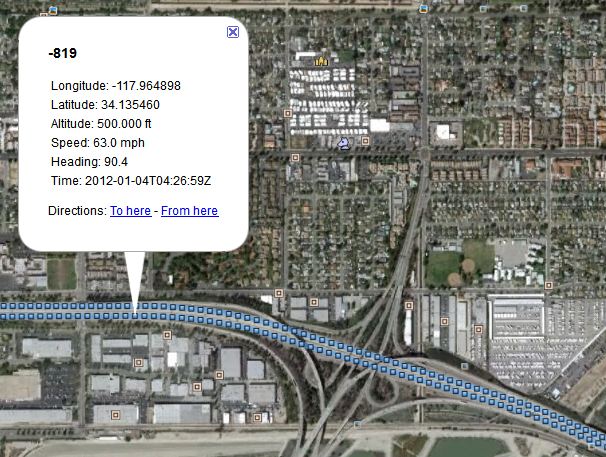Yesterday, the day after Christmas, I went down to my local Ham Radio Outlet just to look around. I inquired about the new Icom ID-31A 440Mhz D-STAR HT with built-in GPS and was told that they had five in stock. After 20 minutes or so, I talked myself into buying the $400 radio to finally try out D-STAR.
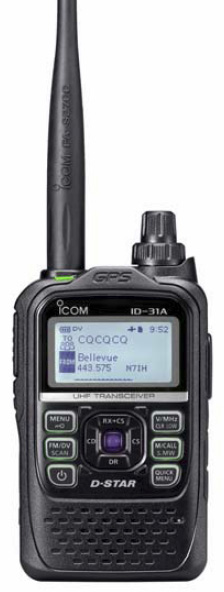
After charging the battery overnight, I was ready to try it out. Here is a picture of everything included in the box, not including the manual and CD:
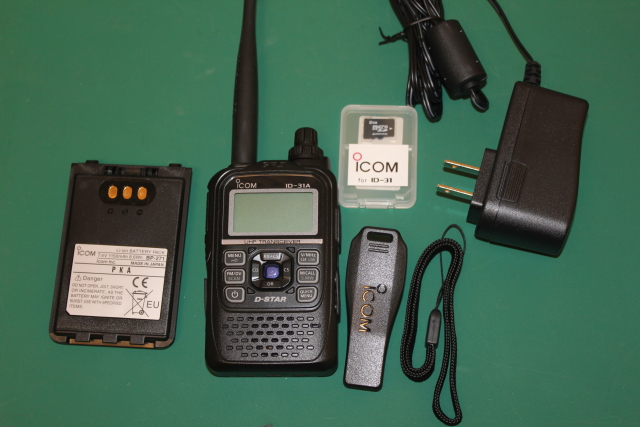
The first run of these radios includes a 2GB microSD card, although the manual indicates that the microSD card is not included. The battery is an 1150 mAh slim battery and there aren't really any special accessories included.
The left side of the radio incorporates a nice size PTT that is very crisp and easy to use. The SQL button is small to prevent you from accidentally hitting it. It serves two purposes: one quick press cracks the squelch open; rotating the dial while pressing SQL changes the SQL level. Note the location of the microSD card slot.
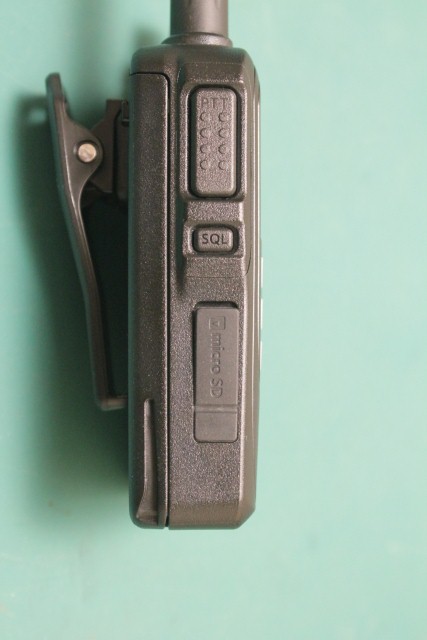
The right side of the radio contains the speaker/mic jack, the data port, and charging plug. The data port is used to clone the radio, connect to a PC for programming, or connecting to an external GPS.
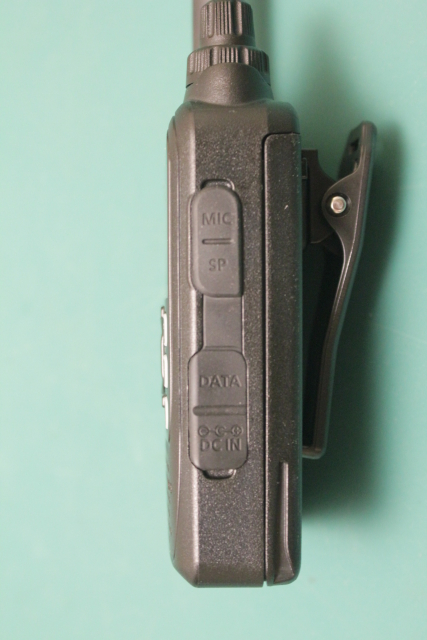
Here is a picture of the Yaesu VX-8 beside the Icom ID-31A to show a size comparison. You can see that the ID-31A is slightly smaller yet similar in size.
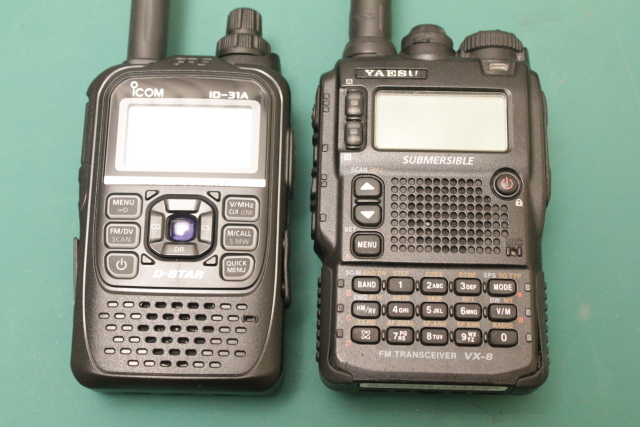
Here is a side shot of both the ID-31A and VX-8 to help compare the thickness of the two radios. As you can see, the ID-31A is only slightly smaller.
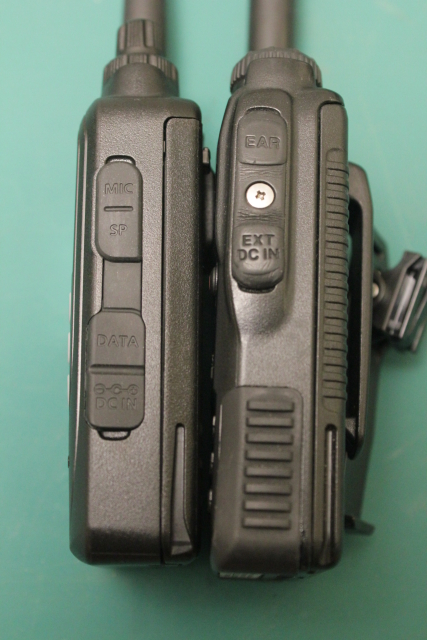
The display of the ID-31A is a very nice dot matrix screen which is very crisp and easy to read. Here is a picture showing the standard FM simplex display.
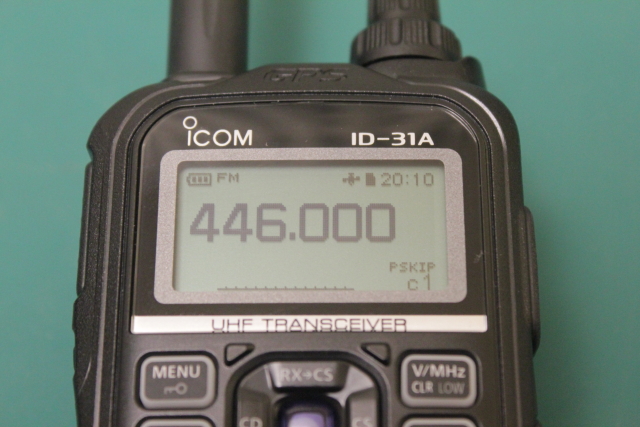
Here is a shot of the radio in D-STAR repeater mode. In this picture, you can see the time, GPS status, battery status, repeater name and destination call, as well as the callsign of the station currently talking.
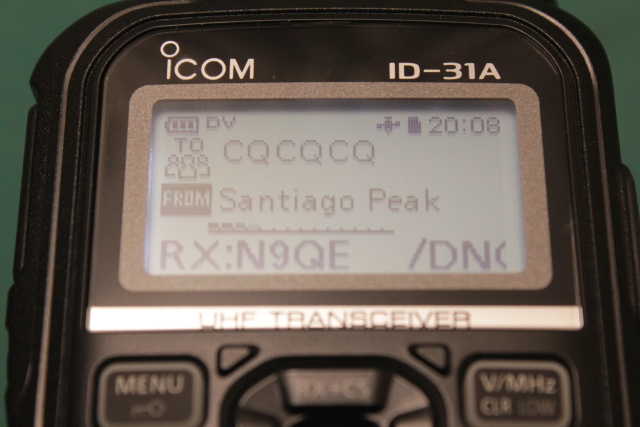
I gave the radio my usual first test of trying out the basic functionality without reading the manual. I successfully used standard analog FM for both simplex and repeaters and even was able to figure out how to program a memory channel. Although the user interface for the basic functions is really pretty easy to use, I struggled at first with the D-STAR functions. Admittedly, the D-STAR struggles were largely due to my unfamiliarity with the terminology and system, but after reading the D-Star quick start sections of the manual, I had a pretty good grasp of the D-STAR basics.
Next up in the review, I'll show some of the basic menu and GPS options and then discuss some of the more detailed D-STAR functions.

After charging the battery overnight, I was ready to try it out. Here is a picture of everything included in the box, not including the manual and CD:

The first run of these radios includes a 2GB microSD card, although the manual indicates that the microSD card is not included. The battery is an 1150 mAh slim battery and there aren't really any special accessories included.
The left side of the radio incorporates a nice size PTT that is very crisp and easy to use. The SQL button is small to prevent you from accidentally hitting it. It serves two purposes: one quick press cracks the squelch open; rotating the dial while pressing SQL changes the SQL level. Note the location of the microSD card slot.

The right side of the radio contains the speaker/mic jack, the data port, and charging plug. The data port is used to clone the radio, connect to a PC for programming, or connecting to an external GPS.

Here is a picture of the Yaesu VX-8 beside the Icom ID-31A to show a size comparison. You can see that the ID-31A is slightly smaller yet similar in size.

Here is a side shot of both the ID-31A and VX-8 to help compare the thickness of the two radios. As you can see, the ID-31A is only slightly smaller.

The display of the ID-31A is a very nice dot matrix screen which is very crisp and easy to read. Here is a picture showing the standard FM simplex display.

Here is a shot of the radio in D-STAR repeater mode. In this picture, you can see the time, GPS status, battery status, repeater name and destination call, as well as the callsign of the station currently talking.

I gave the radio my usual first test of trying out the basic functionality without reading the manual. I successfully used standard analog FM for both simplex and repeaters and even was able to figure out how to program a memory channel. Although the user interface for the basic functions is really pretty easy to use, I struggled at first with the D-STAR functions. Admittedly, the D-STAR struggles were largely due to my unfamiliarity with the terminology and system, but after reading the D-Star quick start sections of the manual, I had a pretty good grasp of the D-STAR basics.
Next up in the review, I'll show some of the basic menu and GPS options and then discuss some of the more detailed D-STAR functions.

